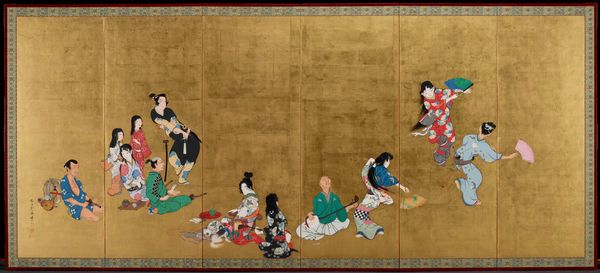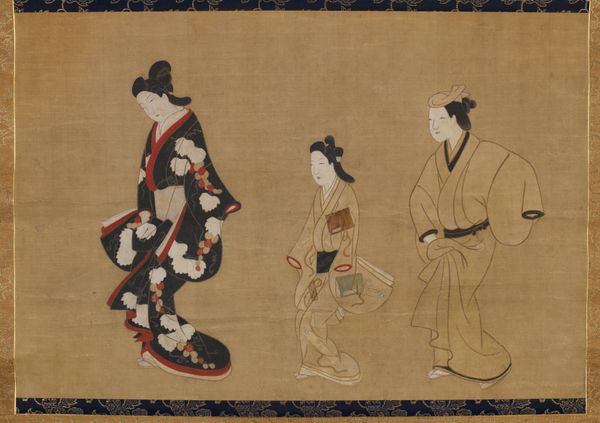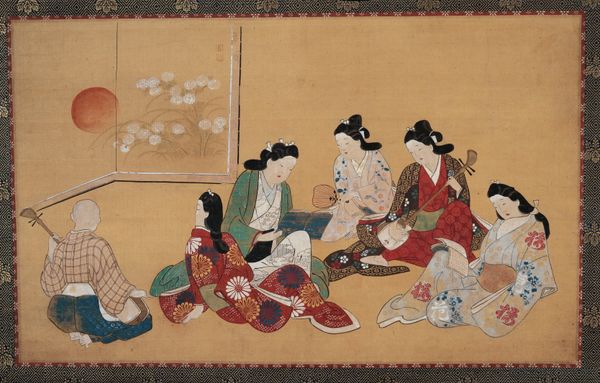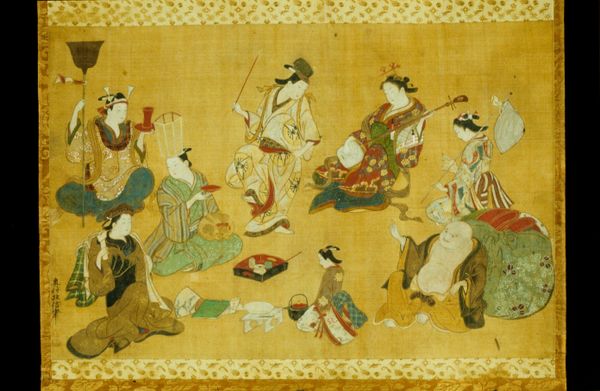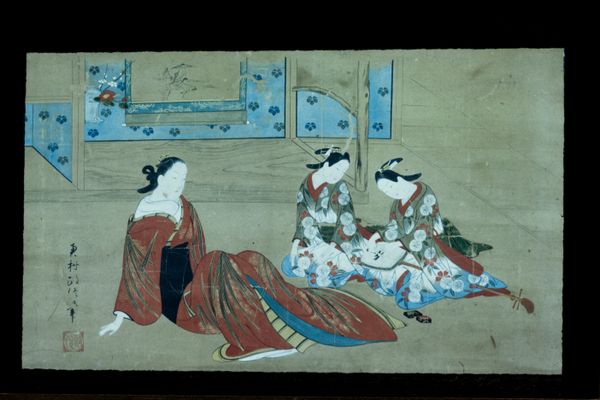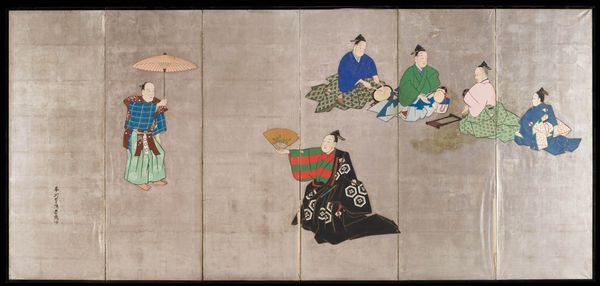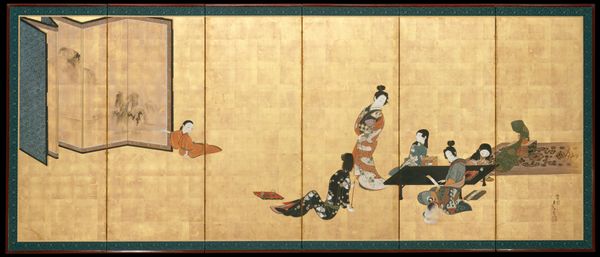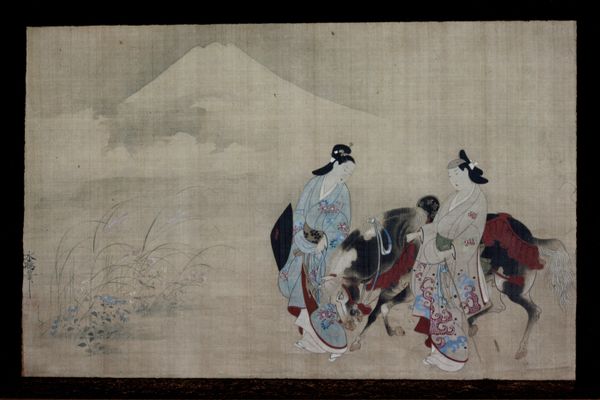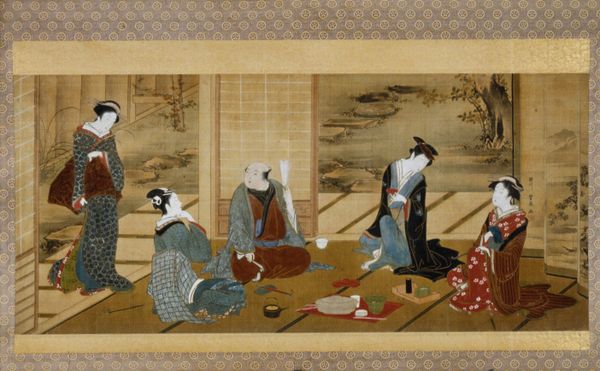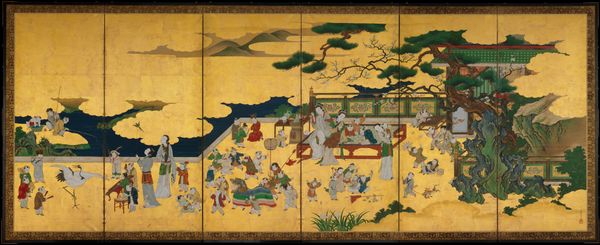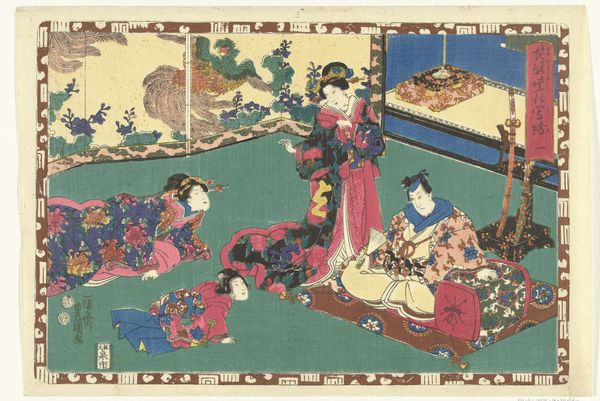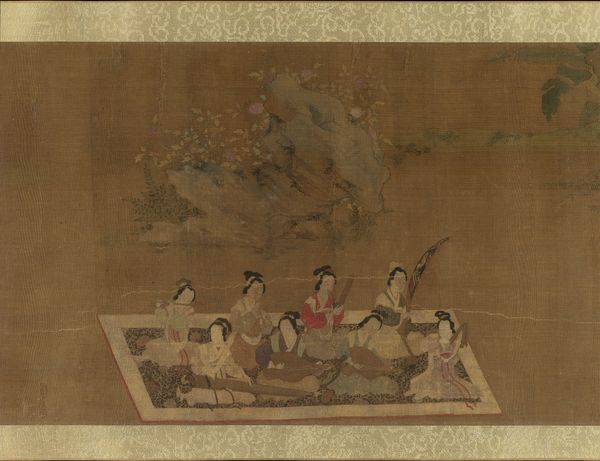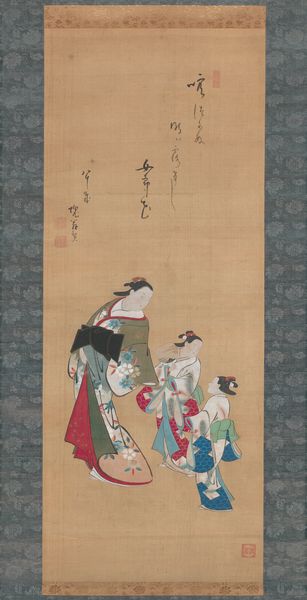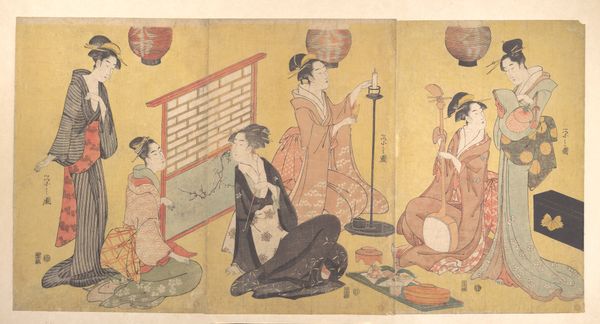![The Four Accomplishments [right of a pair] by Shibata Zeshin](/_next/image?url=https%3A%2F%2Fd2w8kbdekdi1gv.cloudfront.net%2FeyJidWNrZXQiOiAiYXJ0ZXJhLWltYWdlcy1idWNrZXQiLCAia2V5IjogImFydHdvcmtzLzE1ZTY2MTZmLWI0Y2YtNGMyOS1hMmQwLTdkODVjYWMyYTM1ZS8xNWU2NjE2Zi1iNGNmLTRjMjktYTJkMC03ZDg1Y2FjMmEzNWVfZnVsbC5qcGciLCAiZWRpdHMiOiB7InJlc2l6ZSI6IHsid2lkdGgiOiAxOTIwLCAiaGVpZ2h0IjogMTkyMCwgImZpdCI6ICJpbnNpZGUifX19&w=3840&q=75)
The Four Accomplishments [right of a pair] c. 19th century
0:00
0:00
tempera, painting
#
tempera
#
painting
#
asian-art
#
japan
#
folk art
#
figuration
#
genre-painting
Dimensions: 60 × 140 5/8 in. (152.4 × 357.19 cm) (image)
Copyright: Public Domain
Editor: So, here we have the right side of a pair of paintings, *The Four Accomplishments*, painted with tempera in the 19th century by Shibata Zeshin. The array of figures in such vivid colors against the gold leaf backdrop creates this lively yet peaceful aura… What story do you think Zeshin is trying to tell? Curator: Ah, Zeshin. He pulls you in, doesn't he? I imagine him chuckling to himself as he composed this. To me, this panel whispers of an ideal. We see women engaged in traditional pastimes - music, literature, painting, maybe even the tea ceremony hinted at by the little cups. "The Four Accomplishments" implies an elevated state of being, a cultivated life deemed worthy during the Edo period, but the painting winks. Look closer. Editor: I see what you mean, that one woman seems more interested in people-watching than playing the instrument, and is that a child causing a ruckus by that folding screen? Curator: Exactly! Zeshin knows the ideal and the real are often… well, miles apart. This piece balances formality and levity beautifully. The shimmering gold reminds you that this is a luxury object. Editor: I guess it challenges us to really consider these traditional activities as being more than just art forms. Curator: They’re expressions of humanity, and humanity is delightfully messy. Even at its most refined, right? Imagine, though, being the artist and knowing what this all means in that historical moment! It's food for thought isn't it? What has stood out most for you? Editor: Definitely the dichotomy – the tension between this ideal of scholarly leisure and, as you said, the delightful messiness of life actually unfolding! Curator: Precisely! And now that messiness feels quite beautiful, perhaps. We each see what we need in these little snapshots, after all.
Comments
minneapolisinstituteofart almost 2 years ago
⋮
This pair of screens shows fashionable youths in the pleasure quarters enjoying the so-called Four Elegant Accomplishments: music, the board game go, calligraphy, and painting. Music is represented by the women and blind elderly man in the left screen. A go board appears in the far right panel. Nearby, books, scrolls, and writing implements—collectively representing calligraphy—have been laid out for figures who surround a low black-lacquer desk. Some of them turn to admire a pair of folding-screen paintings depicting Chinese landscapes. Shibata Zeshin took inspiration from a famous folding screen commonly known as the Hikone Screen, a masterpiece of Japanese genre painting created in the 1620s or 1630s and well known in the 1800s. Zeshin was so moved after encountering the famous painting in Edo (now Tokyo) in the 1830s that he created at least six paintings modeled after it, including the present screens.
Join the conversation
Join millions of artists and users on Artera today and experience the ultimate creative platform.
